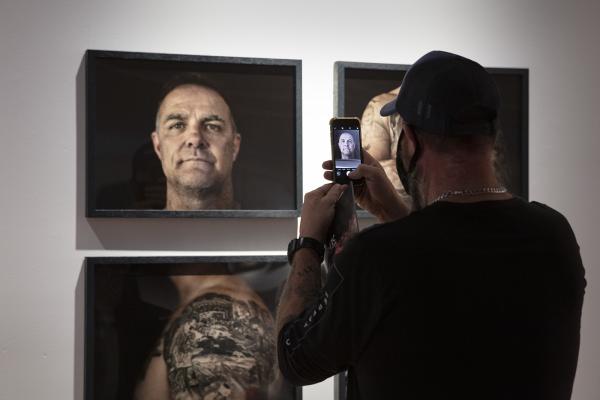Ink stories
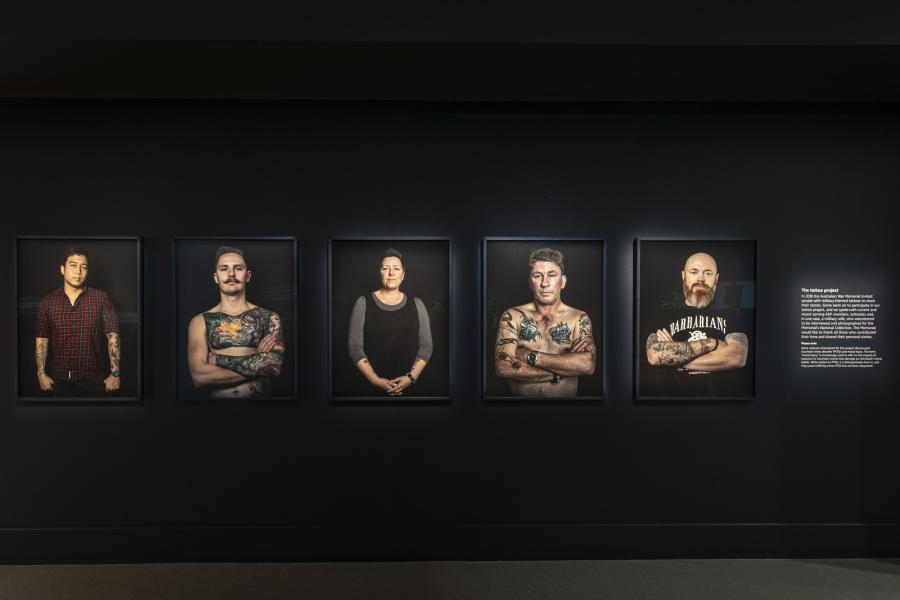
Ink in the Lines exhibition, Australian War Memorial, Canberra.
In 2019 a Memorial team interviewed and photographed over thirty people who had volunteered to take part in its “tattoo project”. This became the Ink in the Lines exhibition, which starts an interstate tour in November 2021. Ink is about more than ink: it’s about stories, and the people who wear stories in the form of tattoos. No other exhibition in Australia has shared the stories of Australia’s military veterans in this way.
In meeting these veterans, we found many common threads to their stories. Service people get tattoos for the most personal reasons, yet the tattoos are often on public display, demonstrating a need to commemorate, to celebrate recovery, or to acknowledge change. A tattoo invites conversation.
Tattoos help to identify a veteran as part of a select group or community, such as their regiment or ship’s crew. Whether a design represents a squadron’s mascot, service medals, or a set of dog tags, the veteran shows his or her allegiance to, or identity as, a service or ex-serviceperson. The tattoo consolidates memories and experiences related to their service. Many of our tattooed veterans saw service in the Middle East, and shared their experiences of both deployment and post-deployment life.
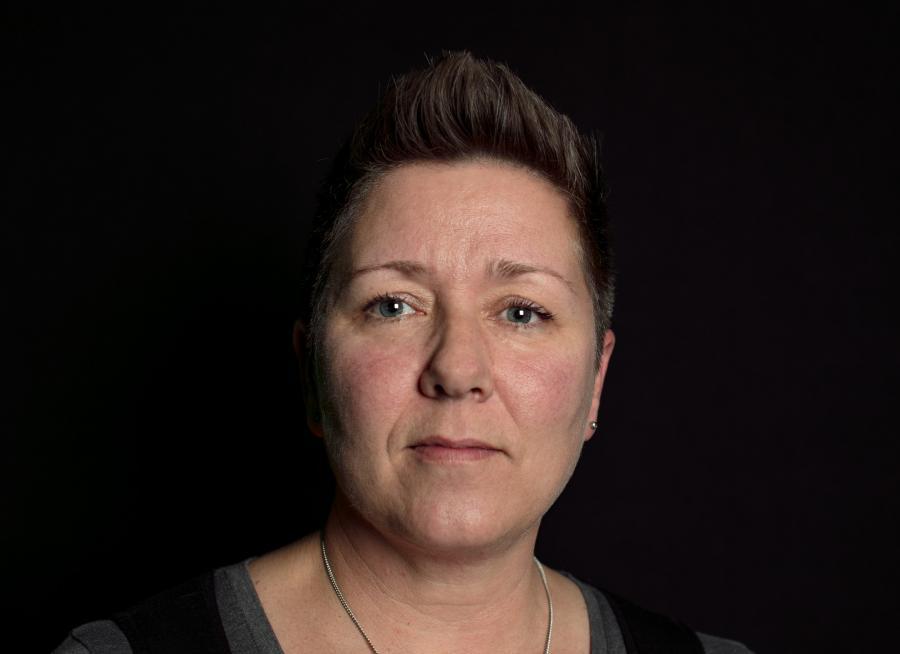
Tanya joined the Royal Australian Navy in 1992.
Tanya joined the navy in 1992, and has not looked back. She loves going to sea, and has anchor tattoos to prove it, saying they are a symbol of both herself and the navy. Her “zombie mermaid and sailor” tattoos are also symbols of the sea, paying tribute to a mythical history of sailing and days when drowning at sea was a genuine risk, “because your body couldn’t be recovered – a terrible death. I like zombies. And I like mermaids. I felt they complemented each other.”
The appeal of the open sea and the camaraderie of a ship’s crew are integral to naval life. “You become a big family. You’re in one another’s pockets 24/7. A group of you will get together and do something randomly cultural, but sometimes we get tattoos!”
In 2012, Tanya was one of a small number of people with the right rank and skills for a certain job in a dangerous city. She deployed to Kabul, Afghanistan.
We had eight Australians killed when I was there. You go to ramp ceremonies [memorial services]. It was always difficult and a little tiny part of you thinks, ‘Thank God, it’s not me.’ My husband would always worry about me when the communications go down. You don’t want to read about your partner or child dying on social media.
One of Tanya’s tasks was to deliver cash needed for paying salaries. She took a different route every time, as a predictable routine would make her vulnerable. She kept an eye on what the locals were doing too. “You knew when it was going to be a bad day, because you’d leave the base and there were no women or children around. You’d be like, ‘Hmm… Let’s go back to base!’”
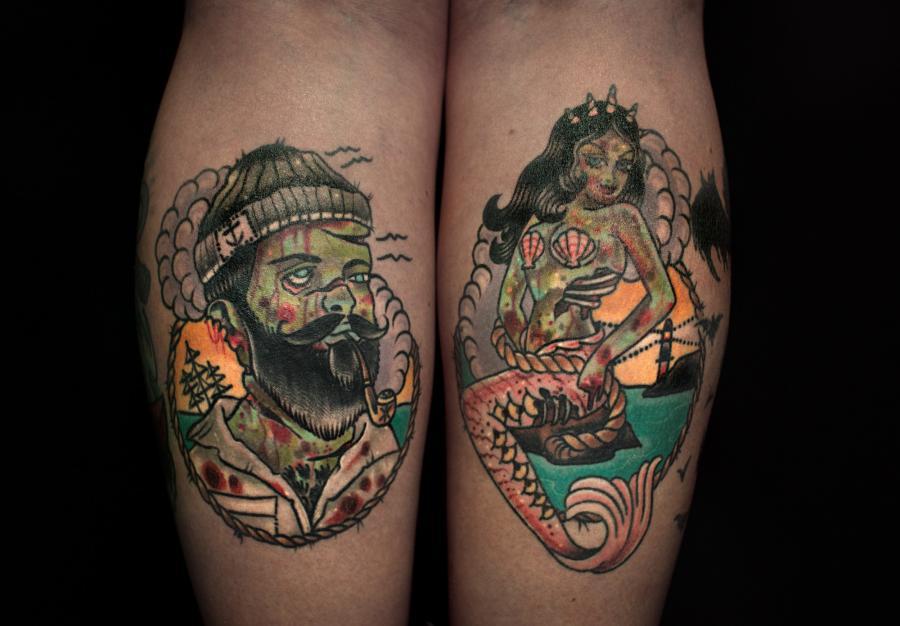
Tanya's paring of zombie sailor and zombie mermaid pay tribute to the tradition of service at sea.
Unfortunately, not all threats were off base; Tanya recalled being shut in the dining hall for hours after a rogue Afghan soldier had shot several Americans. For a sailor like herself, the need to be armed at all times was unfamiliar; on a ship with giant missiles, she said, you don’t need a firearm. But the rules were different in Afghanistan. “We used to take our weapons with us all the time. The gym. The toilet … So it wasn’t a comfort in the back of my mind: this was something that could kill me.”
But being a tattooed sailor, a veteran and a parent are naturally complementary for Tanya.
I would never have got tattoos, I don’t think, if I hadn’t joined Navy. Veterans aren’t all guys in wheel chairs; they’re women too, who are young enough to run around the park with their grandsons. We’ve done stuff and seen stuff, and been part of some amazing experiences, and that’s normal too.
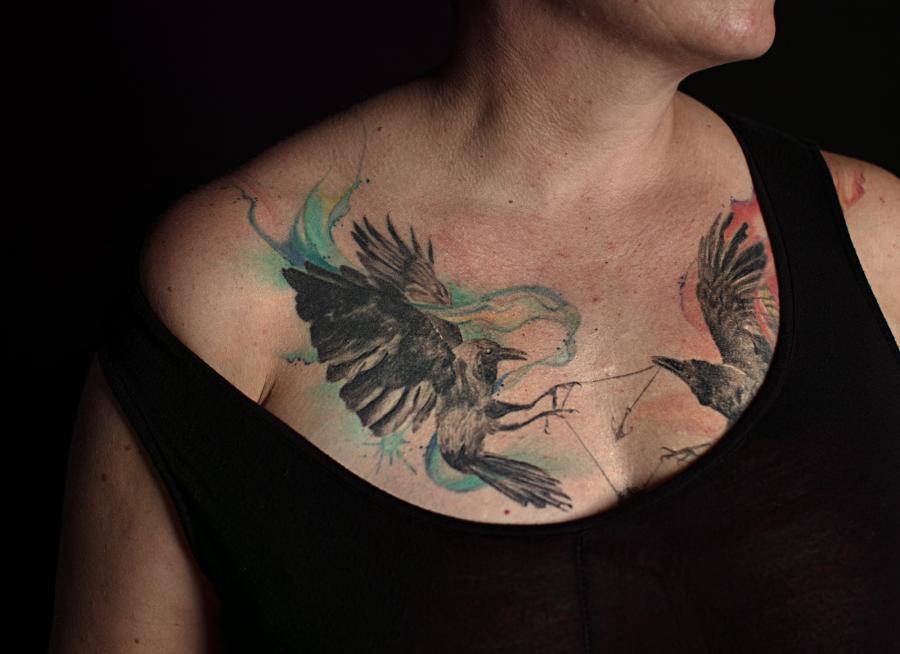
Tanya met her husband in the navy, and they share an interest in Gothic stories and imagery. Tanya also has a twin raven tattoo. Ravens are good luck symbols that also reference the couple’s shared love of The Raven, the poem by Edgar Allan Poe.
Adapting & accepting
Many veterans have experienced life changing events: the loss of a friend, a profound injury, or an unplanned exit from Defence. This may be followed by a painful re-integration into civilian society, challenges to health and relationships – all happening while being processed through administrative or medical systems. Tattoos can embody that loss or transformation, memorialise lost friends and peers, and acknowledge, honour, or transmute painful experiences.
Some participants in Ink in the Lines discussed the therapeutic benefits of being tattooed after their service. Another way to adjust to post-service life is to move into a different sphere altogether, undertaking study or starting a business. Just as important for many veterans has been the ability to talk about their experiences, and tattoos provide a jumping-off point for conversations that are an essential part of their healing process.
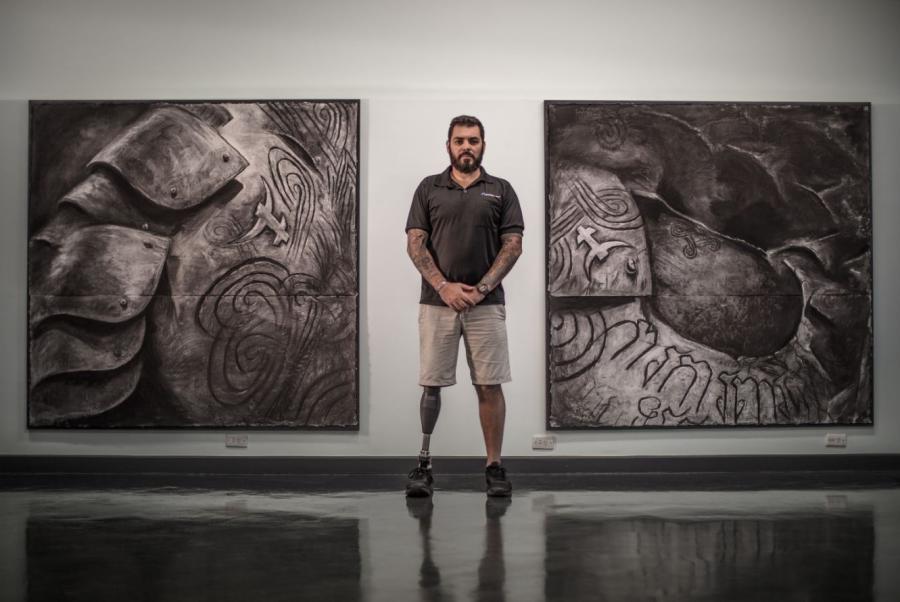
Paul discussed the therapeutic benefits of being tattooed after service.
On 18 July 2009, Paul and his friend Private Benjamin Ranaudo were on an early morning tasking in Uruzgan province, Afghanistan, when an IED exploded. Ben died at the scene while Paul lost the lower half of his right leg. Paul’s recuperation was a considerable challenge as he learned to deal with the loss of a limb, the loss of a friend, and a diagnosis of post-traumatic stress disorder (PTSD). Tattoos helped Paul through this time: “I could sit there for four or five hours no problem at all, I could feel something at least.” While the tattooist’s needle broke through the numbness of PTSD, it also, crucially, got Paul out of the house and engaging with the world.
The tattoos on Paul’s right arm, dedicated to his mates, were initially planned as a single piece: the Australian flag with the soldier’s cross (a rifle planted muzzle down, topped by a helmet). But as the war continued, Paul needed to encompass a corresponding sense of loss. An Afghan mountain range appeared in the tattoo, with an IED exploding in a death’s head cloud, and a lone soldier hoisting a rocket launcher. Paul says that like many soldiers, he’s not religious, but one tattoo shows a battle-torn soldier looking to a god-like entity, about to lift him from the battlefield. “I can’t say I’m too much of a believer in religion … but having a mate who went [in] that way, and knowing what a good person he is, you want to know that he went to a good place.”
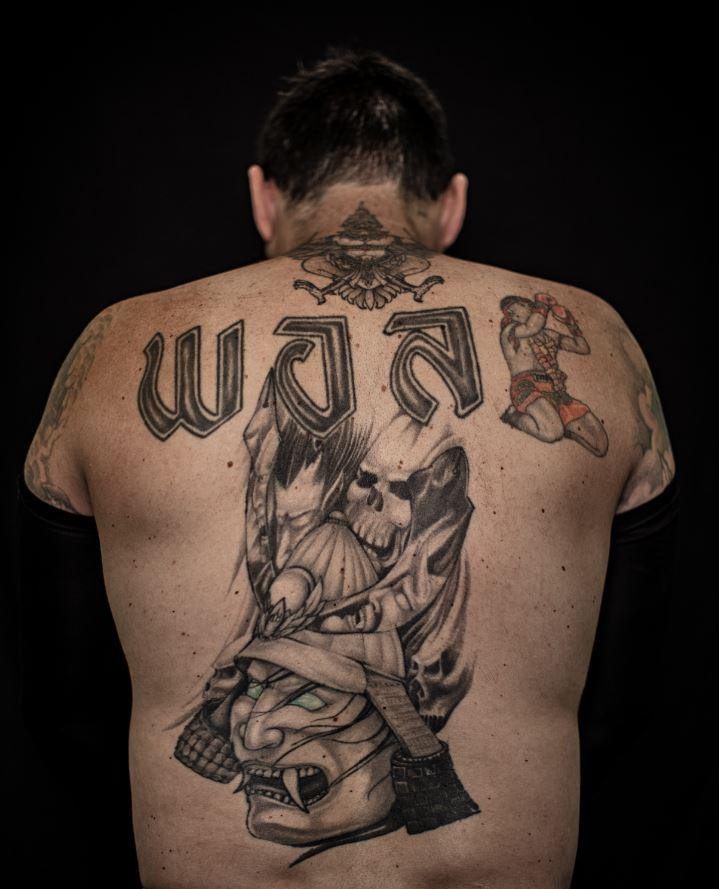
The hours needed to tattoo Paul's 'demonic samurai' helped get him out of the house.
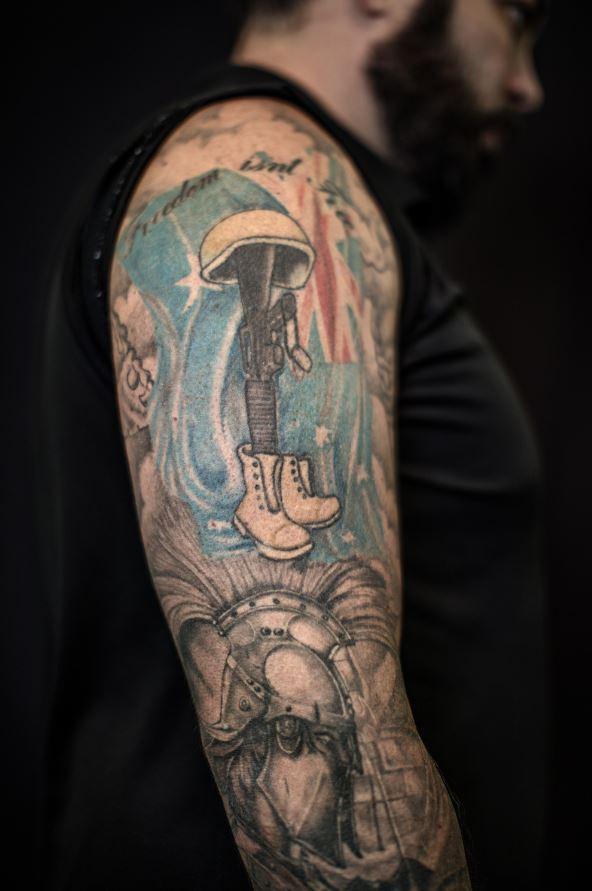
Paul's tribute to friends and fellow soldiers.
Tattoos are not only an intrinsic part of modern military culture but for many veterans are only possible once their wearers have passed through a process of acceptance. Luke says the past is the past; he has learned to deal with it and move on, and like others featured in this exhibition, he is proud of his service. He had always wanted to join the Army, and like many a soldier before him was pleased to deploy overseas, to East Timor in 2001 and Iraq in 2005. On both deployments, certain events affected his wellbeing.
The crunch came years later while he was posted to the Pilbara Regiment, where the landscape struck a deep chord in him. “The mining village reminded me so much of the camps we were at, and the terrain, even though it was a bit more red, was exactly like being in Al Muthanna again.” Luke discharged from the army, then did something he never thought he would do – a history degree. His tattoo of the Archangel Michael defeating Lucifer embodies his attitude. As Luke says, it’s about “defeating anything that’s going to put you off. You can beat it.”
Others of his tattoos are service-themed, representing Luke’s sense that Army is a part of him, just as he’s a part of it: a slouch hat, poppies for remembrance, and two dog tags, inscribed ‘John’ and ’15:13’. They point to the biblical quotation, “Greater love hath no man than this, that a man lay down his life for his friends” – because in the Army, as in life, “you help each other out.”
Ink in the Lines
Many members and veterans of the Australian Defence Forces have tattoos, and while their reasons for getting tattooed are as varied as the people themselves, self-expression and belonging play a part.
They also share a common purpose in getting inked: to remember.
Inscribed on skin are their identities as veterans, the commemoration of loss, experiences of trauma and overcoming adversity, the bonds of family and friends, and acknowledging the experiences that make us who we are.
Find touring dates and locations
